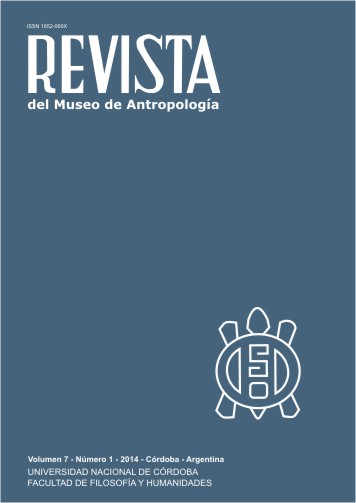Pioneers, Continuities, Debts
DOI:
https://doi.org/10.31048/1852.4826.v7.n2.9183Keywords:
anthropology of sport, state of the artAbstract
We propose, as a presentation of this dossier, to introduce a map of sport studies in recent years, with special emphasis on anthropology, but showing thematic dialogues and approaches that prevent disciplinary constraint. Given the manifest impossibility of including in these pages the totality of the research carried out (in more than thirty years of deployment), we chose to focus on local production -with the unavoidable mention of the pioneering work of Da Matta-, production continuously in dialogue with the multiple and excellent works of Latin American colleagues. To conclude, we will show the areas of vacancy in this field of research by proposing an agenda, one among many possible ones.Downloads
References
Alabarces, P. (1998) ‘Fútbol y academia: recorrido de un desencuentro’, in Alabarces, P., Di Giano, R. and Frydenberg, J. (eds.) Deporte y Sociedad, Buenos Aires: Eudeba.
Alabarces, P. (2002) Fútbol y Patria. El fútbol y las narrativas de la Nación en la Argentina, Buenos Aires: Prometeo Libros, serie Libros de Confrontación.
Alabarces, P. (2005) ‘Veinte años de Ciencias Sociales y Deporte en América Latina: un balance, una agenda’, Revista Brasileira de Informaçâo Bibliográfica en Ciências Sociais, 58, Sâo Paulo: ANPOCS, 2do. semestre 2005: 159-180.
Alabarces, P., Garriga Zucal, J. and Moreira, V. (2012) ‘La cultura como campo de batalla. Fútbol y violencia en la Argentina’, Versión. Estudios de Comunicación, Política y Cultura, 29, México: UAM-Xochimilco, abril: 2-20.
Archetti, E. (1994) ‘Masculinity and Football: The Formation of National Identity in Argentina’, in Giulianotti, R. and Williams, J. (eds.) Game without Frontiers: Football, Identity and Modernity, Aldershot, Hampshire: Arena.
Archetti, E. (1998) ‘Prólogo’ in Alabarces, P., Di Giano, R. y Frydenberg, J. (eds.) Deporte y sociedad, Buenos Aires:
Eudeba.
Archetti, E. (1999) Masculinities. Football, Polo and the Tango in Argentina, London: Berg.
Armstrong, Gary (1998) Football Hooligans. Knowing the score, London: Berg.
Da Matta, R. (1982) (ed.) O universo do futebol: esporte e sociedade brasileira, Río de Janeiro: Pinakotheke.
Da Matta, R. (1983) Carnavais, malandros e heróis. Para uma sociologia do dilema brasileiro, Rio de Janeiro: Zahar.
García Canclini, N. (1990) Culturas híbridas: estrategias para entrar y salir de la modernidad, Méjico: Grijalbo.
Garriga Zucal, J. (2007). Haciendo amigos a las piñas. Violencia y redes sociales de una hinchada de fútbol. Buenos Aires: Prometeo.
Garriga Zucal, J. (2010), Nosotros nos peleamos. Violencia e identidad de una hinchada de fútbol, Buenos Aires: Prometeo.
Geertz, Clifford (1987) ‘Juego profundo: la riña de gallos en Bali’, in La interpretación de las culturas, Barcelona: Gedisa.
Guedes, S.L. (1998) O Brasil no campo de futebol. Estudos antropológicos sobre os significados do futebol brasileiro, Rio de Janeiro: EDUFF.
Moreira, V. (2010) La política futbolizada: los dirigentes deportivos y las redes político-territoriales en Avellaneda. PhD Thesis. Buenos Aires: Facultad de Ciencias Sociales. Universidad de Buenos Aires.
Moreira, V. (2012) ‘Juego electoral y relaciones políticas en Argentina’, História Questões & Debates, 57 (2), Universidade Federal do Paraná, Brasil: 127-149
Downloads
Published
Issue
Section
License
Those authors who have publications with this Journalaccept the following terms:
a. Authors will retain their copyrights and guarantee the journal the right of first publication of their work, which will be simultaneously subject to the Creative Commons Attribution License (Licencia de reconocimiento de Creative Commons) that allows third parties to share the work as long as its author and his first publication in this journal.
b. Authors may adopt other non-exclusive licensing agreements for the distribution of the version of the published work (eg, deposit it in an institutional electronic file or publish it in a monographic volume) provided that the initial publication in this journal is indicated.
c. Authors are allowed and recommended to disseminate their work on the Internet (eg in institutional telematic archives or on their website) before and during the submission process, which can lead to interesting exchanges and increase citations of the published work. (See The Effect of Open Access - El efecto del acceso abierto)












